Your search for * in plants has returned 100 entries
fetofeto
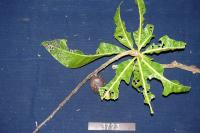
incacas
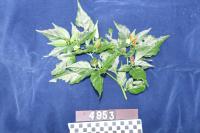
n. herb to 0. 75 m tall, flowers white (collection: Michael J. Balick #4953)
Example: The young leaves are edible; these should be collected, boiled for ca. 8 minutes and eaten with other foods such as cassava. This is one of the local leaves that is said to taste quite good when cooked and mixed with other foods. Both the ripe (red) and unripe (green) fruits are added to soup and other foods as a spice or eaten fresh. The fruit of this cultivar is very hot. The fruit is also fed to chickens who seem to love to eat it.
bookmarkincauinja
inhachac
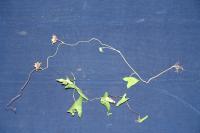
injañad
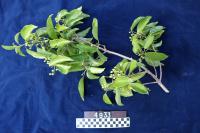
ink
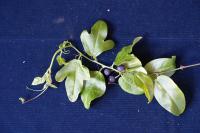
n. vine, growing in coastal forest. Fruits purple. (collection: Gregory M. Plunkett #3556)
Example: A man named Johnnie (Reuben’s grandfather) brought this vine to Aneityum to use it as a rope to tie objects. The ripe fruits are used to paint the face and hands and children make drawings from this dye.
bookmarkinmahe
n. the pandanus leaf
bookmarkinmauwad
n. a convolvulus
bookmarkinmerei
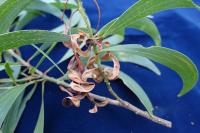
n. tree to 2 m tall,dbh 40 com (collection: Michael J. Balick #4877)
Example: To treat a local disease (that causes pain in the stomach) called "Namya," peel off the outer bark, collect 1 handful of inner bark, boil with 1/2 liter of water, drink warm, 3 cups/daily, for 3 days. At that point the person will feel that "the weakness is no longer in the body." After 3 days of treatment the pain in the stomach goes away. Wood is used for posts; leaves for compost for holes that people will plant taro in--line the bottom of the hole before placing soil and taro in it.
bookmarkinmetla
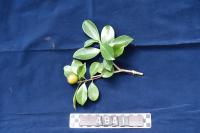
inmopoñ
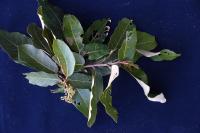
n. tree, 10 m tall (collection: Gregory M. Plunkett #3516)
Example: The young stems are used to make fishing spears. These stems are also used to make the poles that connect an outrigger to a traditional canoe, as they are light and strong. The large trees have extensive roots and stumps and are used as a pen for pigs by making a fence from these.
bookmarkinp̃al
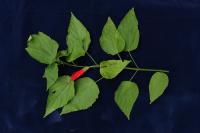
n. treelet or shrub, 1 m tall (collection: Gregory M. Plunkett #3204)
Example: To treat a headache, people traditionally would make a small cut ¼ inch long with a bamboo or piece of glass around the eyebrows where it is soft and then drip juice of the crushed leaves in the cut to take away the pain. Let the cut bleed first and then put the juice in it and it will stop the pain. The bleeding will stop the pain and the leaf juice will stop the bleeding – sometimes the pain will go away immediately and sometimes it takes a few minutes. So this technique is used to treat a very strong headache like a migraine.
bookmarkinrokdania
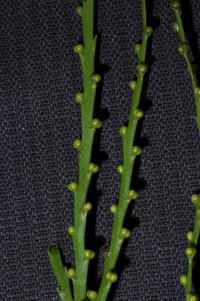
n. epiphyte on trees, growing in dense rainforest. (collection: Gregory M. Plunkett #4093)
Example: 1. Sickness blo namya. When a man accidentally has intercourse with a woman during her menstrual cycle, he can become sick. The leaves are squeezed, along with others, to produce an extraction. The dose and duration varies according to the degree of the symptoms. Further information about the preparation withheld.
bookmarkinrowod
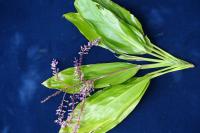
n. unbranched treelet, 1. 25 m tall (collection: Gregory M. Plunkett #3526)
Example: People use the leaves for cooking any ground up food that is cooked on a fire such as manioc or bananas, roasted or boiled in water. Fish can be cooked this way. The roots of this plant can be cooked in an earth oven. These need to be cooked for 2 days or 2 nights, lke a yam. The plant has large roots that are good to eat. Chew like a piece of surgarcane, the taste is sweet like honey. Swallow the juice and spit out the fiber. The roots, once cooked, can be stored for 6 months. In ancient times they were eaten during times when there was no food. This food is said to be able to sustain a person for one day, if eaten in the morning, the person not be hungry until sunset. Today, people eat this plant at festivals, as it is no longer a famine food.
bookmarkintal eteuc
n. the name of a plant with a white flower; a lily
bookmarkinteses
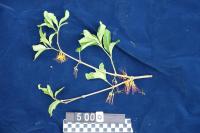
n. parasite in tree, flowers orange with reddish base. Growing in secondary forest. (collection: Michael J. Balick #5000)
Example: This plant is said to have a type of magical use. Young men take one node of the stem of this plant and use it in an unspecified way to attract young women.
bookmarkintit plen
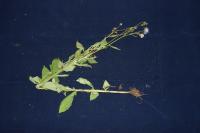
n. herb, growing on roadside in open disturbed area. (collection: Gregory M. Plunkett #3605)
Example: 1a. This is an invasive weed that was brought to Aneityum by aircraft. Name means "aircraft mess". 1b. Means “planes waste” refers to white trails as this has lots of white seeds that fly.
bookmarkintop̃asiej
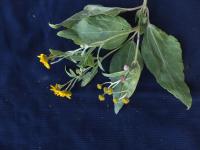
n. herb. Grows on the coast. (collection: Ashley A McGuigan #18)
Example: 1. For painful urination - The first way to prepare this it to take four big leaves and pound them with some water to get out the juices and squeeze this into a cup and drink. This can also be given to babies and children. The second way is to take two small leaf tops and two that are slightly larger tops. Chew these leaves and try to swallow all of it, if you can’t swallow the leaves then spit out the fibers and only drink the juice. 2. Calendar plant – when it flowers, turtle has fat in them, hang turtle to dry, fat melts, and can collect and eat it. Past practice – not eaten now. 3. Young parts of leaves can be cooked as a cabbage with coconut milk. 4. Wrap fish, especially those from the sea, with this leaf – first take lap lap leaf, then layer with this leaf, then wrap fish tie with pandanus for cooking on charcoals. Also with reef fish can wrap and cook directly on charcoal. Then eat leaf with the fish. 5. Medicine – top unrolled leaf tips, – new baby put this in his mouth and then take it out again – believe that it will make the baby talkative – 1x only when 1-2 days old. Put tip on tongue – shut mouth for a few seconds then pull it out. 6. Tips of leaves for diarrhea – remove old leaves, take 1 tip for baby, adults 2-3 tips, chew it, swallow juice and spit out fiber. 1x day, 3 days.
bookmarkintoutau
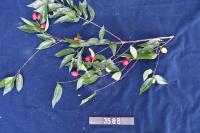
n. tree, 14 m tall (collection: Gregory M. Plunkett #3586)
Example: To make a fire, take a 1-2 cm diameter stick, sharpen it and rub it against a larger piece, ca. 6 cm in diameter. As a person rubs, the stick will start smoking and then start a fire, especially if there are a few small slivers of stem on the stick that can catch fire. People use other types of sticks to rub against the larger piece as well, and this will make a fire.
bookmarkinwoapeñ
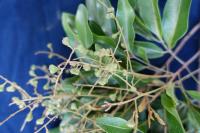
inyacelcou
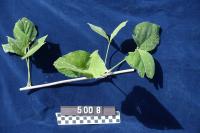
n. vine running many meters long over clay soil and grassy area on hillside where the triangular wooden signs are that used to be a landmark for ships coming to the island. Sterile. (collection: Michael J. Balick #5008)
Example: This plant is the focus of an important legend on Aneityum. When the missionary John Geddie and colleaguse first arrived on the island in July of 1848, the Chiefs welcomed them but some of the people did not like the idea. So these people sent a basket containing a peeled coconut and a fish (nopom) to the Chief in Umej to ask him to support the idea of getting rid of the missionary that the Chief of Analcahuat had welcomed. If the Chief of Umej were to eat the fish and coconut meat, it would mean that he agreed with the opposition. The Chief refused to eat the food in the basket and he told the people a parable involving this plant. A person cannot find the tip of the stem or the end of the root in the ground. So if they were to eliminate the missionary, his activity would continue because of God’s power. As it is with this plant, it will continue to grow and flourish if you cut it or try to dig up the root. So he sent a message about this plant to the people in Analcahuat who objected to the presence of the missionary stating this parable. Those people in Analcauhat held a secret meeting and they chose a powerful and strong person to kill the missionary. During the night the person went to the missionary’s house while he was in the toilet. Returning to the house, the missionary found the person in his doorway, and that person lifted his club to strike the missionary. But at that point the attacker’s hands suddenly had no power and the club fell from his hands, and he fell over. The missionary told him to get up, and not come back. After that experience, the people of Umej realized that God’s power was great and they could not go against it. The Chief took the peeled coconut that was sent him and covered it with the skin of another coconut and planted it instead of eating it. This coconut grew and the missionary’s work continued to grow on the island. So this vine played an important role in communicating the power of God to the people of Aneityum.
bookmarknafanu
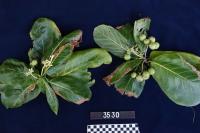
n. tree, 6 m tall (collection: Gregory M. Plunkett #3530)
Example: This plant grows in coastal areas, and is a good source of firewood. It can be used for house posts. The leaves are used as an unspecified medicine. There is a belief regarding the black and white sea snake, that represents a seawater spirit. Mix this with other unspecified leaves, mash together, squeeze into a bamboo tube and fill it. Give it to a woman to drink to keep the evil snake spirit away. The same preparation can be used to treat toothache, caused by the seawater spirit. "The spirit can trick you into going to fish every day."
bookmarknaheñ
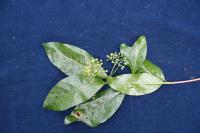
nahojcei
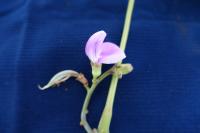
naipomyiv ~ naipomñiv
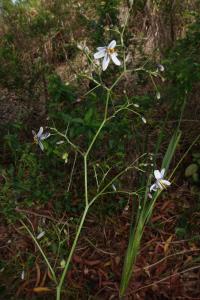
nala
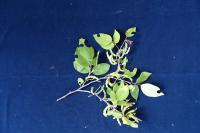
nala
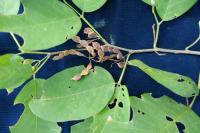
n. tree to 7 m, dbh 20 cm (collection: Michael J. Balick #4860)
Example: This is a common tree. If a person travels from one district to another on Aneityum, and you see the tree planted in that other district, a person knows they are free to come into this area. When the leaves are yellow, as in a young tree, the local name is nala’gay. If a person carries a branch of this tree into a village it is a symbol that the person is coming with peaceful intentions.
bookmarknala
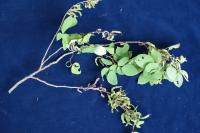
nalak u nije
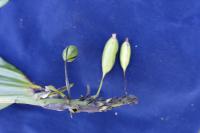
namlau
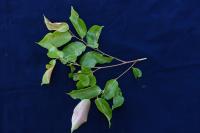
n. shrub, 2 m tall (collection: Gregory M. Plunkett #3485)
Example: 1. The larger stems of this plant can be used to build houses, for rafters. 2. It is also a good source of firewood. 3. Ancestors, before go to chief’s canal and want to talk about a complicated issue – a person would cut a branch and bring it to the sea and tap the water surface and would say what he wants, ask that he would want that issue to be solved and that others would follow his ideas and then go back to the meeting place and take stick, keep wind at his back, moving stick in all directions and then he will convince the people of his ideas. This is done by the chief’s spokesman. Helps convince the opposition. Helps keep power in hands of parent(??) chief rather than subchiefs who might have other ideas.
bookmarknamlau elwa
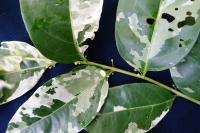
n. tree to 15 m tall, dbh 40 cm (collection: Michael J. Balick #4859)
Example: The wood of this tree is good for carving. The fibers go in one direction so it is easier to carve, for example, to make a kava bowl. In general, this is the species used to make kava bowls. If your kava is not strong, then making it in this bowl will make it stronger. The kind of bowl made from this tree has a handle on each side of the bowl and it is held with 2 hands. The place name Anumwmamlau is named after this tree. There are said to be two types of this tree--one with all green leaves (this specimen) and one with white and green leaves. If a person is going to a Tabu place and is concerned about spirits, they should take a handful of these leaves and wash the body all over with it--take a swim (bath) with it. Then the person can go to the Tabu place without risk. There are other unspecified spiritual uses of this tree. The second part of this local name "elwa" refers to the variegation of the leaves.
bookmarknamotmot
n. grass; also "namutmut"
bookmarknamrop̃om
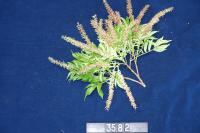
n. tree, 7-8 m tall (collection: Gregory M. Plunkett #3582)
Example: Firewood, timber good for bush houses. Calendar plant – when it is in flower, the old people know it is time to harvest root crops, like yam and other vine crops, in the wild, as yet unspecified. Local names = INYAC, NOMODEJ TAL, NOMODEJ WOU, NOU LELCEI… etc.
bookmarknanad
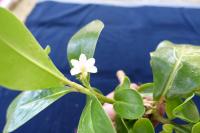
nanad cop̃ou
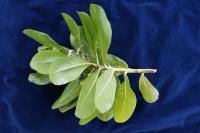
n. small shrub, 0. 5 m tall (collection: Gregory M. Plunkett #3219)
Example: 1. A stimulant plant. If a person is going to their garden early in the morning before the sun come up, break 2 top young leaves and chew and swallow the liquid, spitting out the fiber. This makes the person able to work harder and not feel tired while in the fields. It was noted that "a person can do the work of many people if they chew this." 2. The leaves are used for fertilizer for taro--put a bunch of leaves in a hole were taro is to be planted as a compost/antibiotic. This practice is said to kill all of the bad organisms such as bacttively impact the health of the taro plant. 3. This species is collected in the coastal areas, and is different from the one that looks similar to it, that grows in the forested areas. People take 4 leaves, chew leaves, swallow juice, gives energy to work hard the entire day. For fishing, take lots of ripe fruits and put in pocket, you will be able to catch a lot of fish. It brings good fortune when fishing. Roots – take one root, wash where a woman is giving birth to a newborn baby, give a drop of the juice from the root to clear the mucus in the throat.
bookmarknapjis
n. a species of grass
bookmarknap̃at
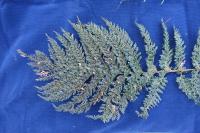
n. terrestrial fern, growing in dwarf cloud-forest. (collection: Gregory M. Plunkett #3268)
Example: For performing a weather magic ritual to produce fog, this plant is fermented along with another plant (nirid u numu) in a hole in a sacred stone (called "Naemoso") at a secret location on Aneityum.
bookmarknap̃ojev
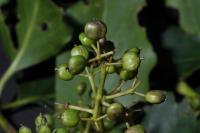
nared
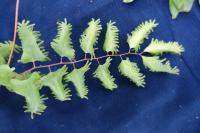
n. vine to 3 m, sori brown. (collection: Michael J. Balick #4930)
Example: Take a handful of the vine, twist it into rope with many stems of the vine, and use it to tie bundles of sugar cane. It can also be used to tie wild canes (Miscanthus) to the roof of the house. Take a handful of the vine, twist it into rope with many stems of the vine, and use it to tie bundles of sugar cane. It can also be used to tie wild canes (Miscanthus) to the roof of the house.
bookmarknasjiralcau
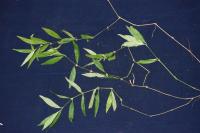
nasjiramnem
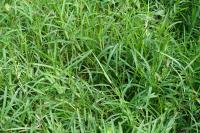
n. grass to 20-30 cm tall, florets brown. Growing along trail. (collection: Michael J. Balick #4970)
Example: This plant is used to make a medicine to stop bleeding, as a styptic. Squeeze a handful of leaves together and apply the leaves as a poultice to the wound or drip the juice on the wound when it does not seem wise to put pressure on the bleeding. This will stop the blood from flowing from the wound and is only to be used on a small wound.
bookmarknategpece
n. kind of plant, grass, or fern
bookmarknau-hos
n. bamboo to 5 m, sterile. (collection: Michael J. Balick #4940)
Example: Used to build walls of local houses. The outer skin is stripped off, stems cut in half then smashed flat, the inside is stripped clean and woven into walls. The cut pieces of entire stems can be filled with food and used for cooking that food. Cover both ends with leaves and cook. If a person has skin that becomes infected, use sharpened stem as a local knife to remove the infected area of skin. Use as a local water pipe to move water from one place to another (nobol). Either split the stem in half or punch the nodes out throughout the entire tube and use as a pipe.
bookmarknaualha
n. kind of plant, grass, or fern
bookmarknaupigat
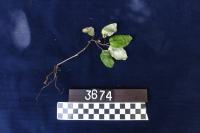
neau
n. a small water-plant
bookmarknecemas
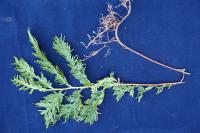
n. terrestrial plant, growing in dry forest. (collection: Gregory M. Plunkett #3509)
Example: This is a "message plant" that signifies that there has been a death. The person holds it or puts it on their head, goes to another person’s house and hands it to the person they wish to convey the message to, without saying anything and that person knows that someone has died. It can also be handed to that person. The person receiving the message then asks "who" and is told the deceased person’s name.
bookmarknecñopod
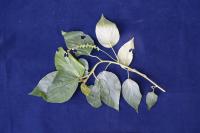
n. shrub, 1 m tall (collection: Gregory M. Plunkett #3512)
Example: This plant is used as fertilzer to place on bottom of the taro patch in the same way as GMP #3456 to help "feed the ground" for next year. The leaves are used to wrap food. When a person is chewing kava, pile the chewed kava roots on the young leaves of this species. Also, an unspecified medicinal use.
bookmarknedouyatmas
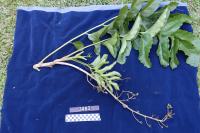
nedwodou
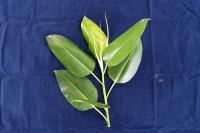
n. tree to 6 m, dbh 10 cm (collection: Michael J. Balick #4865)
Example: To bring luck when fishing. Take 4 leaves with stems still on them-- first thing in the morning, when it is cool and quiet and there is not much noise, break the left hand side from two leaves and the right hand side from two leaves (total 4 half leaves) and take those pieces and put in the bag containing your fishing gear. The meaning of the local name is that "these leaves will please the Sea God" who will not understand it if a fisherman does not have leaves with them on their trip. There are groups of people who are part of the Sea Gods and you must notify these people before you go out to fish. If you have these leaves in your bag, you are said to get many fish. In the past certain people were responsible for the harvest from the sea; these people used to know this ritual. Not much known at present. Birds eat the fruit of this tree as does the flying fox.
bookmarknehivaing
nejev
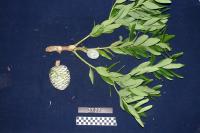
nelas
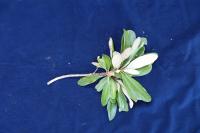
nelmaha
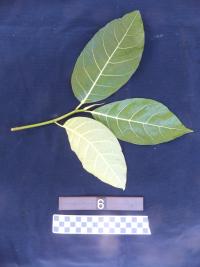
n. tree. Growing near village. (collection: Ashley A McGuigan #6)
Example: 1. To cure spirit sickness of the niteitau. Use plants that also end with "au" : niditau, intoutau, naoyerop. Go to the top of the plant to get the soft leaves of the plants niditau, intoutau, naoyerop, also take the bark. The person making the medicine should be holding the these leaves with a piece of nelmaha. Nelmaha means go away. The sick person chews the leaves and bark and swallows the juice spitting out the fiber into the nelmaha the medicine maker is holding. The medicine person then takes the spit out fiber in the nalmaha leaf and throws it into the sea in front of the village. 2. To cure headaches casued by bad spirit - Take one top from Nelmaha and one from inrowod (white stripe variety) Combine and chew these then spit them out and apply to the sick persons forehead. 3. To cure headaches - Someone other than the woman must prepare this. Break the top branch of netethae and remove leaves for use. Combine with the top leaves of the top branch of nelmaha. Chew the leaves and drink the juice. Do this when the sun is setting on the horizon. The woman gives the leftover fibers to the person who prepared the medicine and that person goes and throws the fibers in the direction of the setting sun. 4. To cure toothache when pregnant - Take the inner bark from Intejed and boil it in a pot of seawater (about 1 liter) along with 2 leaves from each of inpounatmas, narayag, nahayag, and nelmaha. Boil until juice is visibly leaving the plants. Put this water into your mouth and hold it there for 2-3 minutes. Do this this with one cup in the morning, 1 cup in the afternoon, and 1 cup in the evening. 5. Used to fight against black magic in an unspecified way. 6. Roll leaf and put in pocket for protection when walk in a new area. 7. Message plant if a land dispute – if a person puts this stem or leaf in another’s garden whom they are angry with it means go away!! 8. To treat sick people, especially who fall ill from black magic to save their life. Symptoms vary, for example a person with small boils over body,* a person chews the leaf and spits it on the sick person, 1x and then puts the branch with leaves near the sick person when they sleep – 3x (1x day) branch is ca. 25cm long. (*headache, severe)
bookmarknelm̃ae
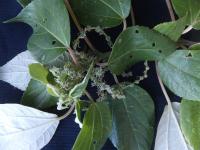
n. small tree. Found in the village, but not cultivated. (collection: Ashley A McGuigan #17)
Example: 1. Ancestors used this plant to make fish line – cut young branches, remove outer bark and tie together, put in salt water or fresh water for a week, it is now strong, dry in sun, take fibers and twist them together to make a very long fishing line. 2. Leaves are used to feed pigs. 3. Take inner bark, scrape it and put on boils. Attach with any leaf and it takes out the boil. 4. Trunk for temporary bush house.
bookmarknemla
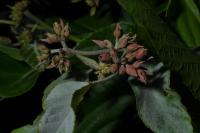
n. tree, 4 m tall (collection: Gregory M. Plunkett #4127)
Example: 1. This wood can be used to start a fire, where there are no matches. Two dried pieces of wood are rubbed vigorously together to create tinder. The tinder is then added to dried material in order to start a fire. 2. The wood of this plant is used as rafters in traditional houses.
bookmarknemtanla
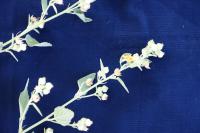
n. herb to 1 m, flowers yellow. (collection: Michael J. Balick #4892)
Example: If a person is coming to a "new" village, e.g. not their own, and they have a branch in their hand, it means that they are coming in peace and not trying to harm anyone else in the new village. Or if they are asking for something that might be found in the new village, they hold the branch of this species and pass it to a person from that village so they will accept you.
bookmarknepelvanwou
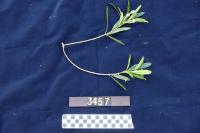
n. liana, on Polyscias cissodendron (collection: Gregory M. Plunkett #3457)
Example: 1. Macerate the young stems, remove the outer "skin" to release the odor of the stem and weave into a head garland for decoration. 2. People use it as a headdress. This is a male plant, ancestors used both male and female wrapped together for the headdress. Man would put this on head to attract a woman that he liked. Be careful when you are passing other women who will be attracted to the wearer – so the person can’t speak to them so he can focus on the one he is attracted to.
bookmarknerero
n. calabash
bookmarkneri
n. kind of plant, grass, or fern
bookmarkneroa
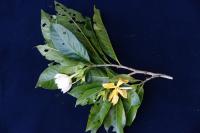
n. tree, 6 m tall (collection: Gregory M. Plunkett #3513)
Example: 1. The flower is used to make a necklace and the wood used as poles for a house roof. The flower is very fragrant and people put it behind their ear to enjoy the aroma. The leaf is used to bake taro in the earth oven. Use a fire to heat stones, then when the fire burns down and the stones are hot, pile these leaves on top of the hot stones and then place the food being cooked--taro, fish, pig, cassava, banana or other foods--on top of the leaves. Then pile more of these leaves on top of the food and then place additional hot stones on top of that pile of leaves. While the food is cooking--each type of food takes a different amount of time--the leaves give off a very nice smell and help flavor the food. 2. Firewood, flower smells good, put in coconut oil to give it aroma. Grate coconut, add small amount of water, put in bowl, heat until water is evaporated, the oil is on top, take all the coconut cream on bottom save oil in another pot. Drop 2-3 flowers into coconut oil and boil, or more flowers. Try not to burn the oil. Take out flowers and use pure oil. Also used for final covering of large earth oven during feast along with GMP 3503 – esp. wedding feast. Planting pole and hard and heavy wood – sharp end. 3. This is a "calendar plant." When it flowers, people know that the taro is ready to harvest.
bookmarknese
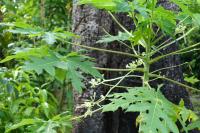
n. shrub to 2 m, flowers white. forest near house. (collection: Michael J. Balick #4871)
Example: A handful of flower buds are collected and put into water with 1-2 pieces of papaya roots. Heat the water and drink it hot for the treatment of hypertension or vein problems, or to promote circulation in overweight people. Do this treatment 1x a month. The white sap is collected and used to soften octopus flesh for eating. Put sap, fruits and chopped leaves in a bowl and add the octopus, allowing it to remain in the bowl for 1 hour--this will soften the flesh of the animal. The sap can be used to wash the skin of tough beef or wild pig--it helps to "burn" off (remove) the skin. When cooking tough meat, take young fruits of this tree and cut them up and put them in the pot with the meat, boil it to soften the meat which can then be cooked.
bookmarknetemu
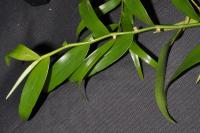
netjeñ
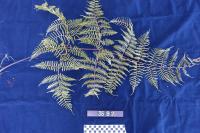
nevak
n. prepared pandanus leaf
bookmarknida
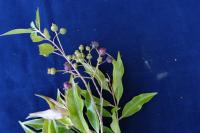
niducei
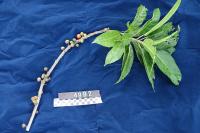
n. tree to 4 m, dbh 6 cm (collection: Michael J. Balick #4992)
Example: The stems of this plant are good for making temporary houses in the bush. When used as firewood, the stems are said to "hold the fire," meaning they burn a long time, even all night so in the morning the fire can be restarted by adding kindling. This wood is said to be good when a person has no matches, as the fire can be restarted easily. Young leaves of this species can be wrapped around ground coconut and eaten raw. The young leaves can also be boiled in water for 15 minutes, coconut milk added, and eaten with tubers such as cassava. The young leaves can be wrapped around beef or pork, tied with a string from Pandanus and cooked in the earth oven.
bookmarknidwunitei
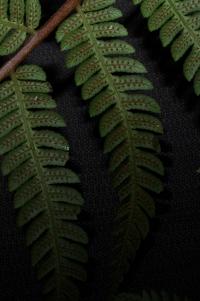
nieg
n. a reed
bookmarknigired
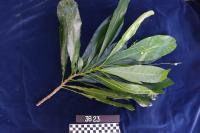
n. tree, 4 m tall (collection: Gregory M. Plunkett #3623)
Example: People use the leaf of this plant to layer on the bottom of the earth oven, and then pile food such as manioc or taro on it, then pile leaves of this species on top of that. This will help insulate the food from the high heat of the earth oven and allow it to cook better. Used especailly in feasts like weddings. Women usually collect this leaf and is used to cover very large earth ovens.
bookmarknijisei

n. herb to 1 m, flowers white with red bracts (collection: Michael J. Balick #4912)
Example: To treat high blood pressure. Take a half liter of water, mix a handful of roots in it, boil, drink one cup 3 times daily, warm, for three days. This is to treat high blood pressure when diagnosed in the clinic. The leaf is woven for grass skirts--dry in sun, weave into skirts.
bookmarknikam

n. large tree, 18 m tall (collection: Gregory M. Plunkett #4076)
Example: 1. The name means "I come". This plant is used to convey messages. When a branch of this plant is left at the house of a person it indicates someone had visited them and they were not there. 2. Children eat the nut of the ripe (yellow) fruits.
bookmarknillum
n. moss
bookmarknouras

n. tree, 3-4 m tall (collection: Gregory M. Plunkett #3571)
Example: As a medicinal plant, take the ripe fruits, put it in a dish or bucket, squeeze out the juice and save it for drinking. The dose is 1 tablespoon, morning and afternoon if a person feels tired. This treatment will help give energy to a person. The leaves are placed on the bottom and top of an earth oven to help cook the food. The leaves are also used to wrap shellfish for cooking over a fire. When chewing kava root to prepare it for drinking, put the piles of chewed root on top of this leaf to keep it clean. Some men cut the green fruit in half and rub it against the skin of their face after shaving to protect the skin from rashes and irritations.
bookmarknumuyehec

nupunyepec

nuput, noho’ich

n. cultivated anthropogenic landscape (lawn and planted trees). (collection: Keith E. Clancy #6655)
bookmarknälmaha
n. Ficus septica var. cauliflora
bookmarknämdokai
romo romo

n. vine to 1 m, fruits black. Secondary forest. (collection: Michael J. Balick #4906)
bookmark















